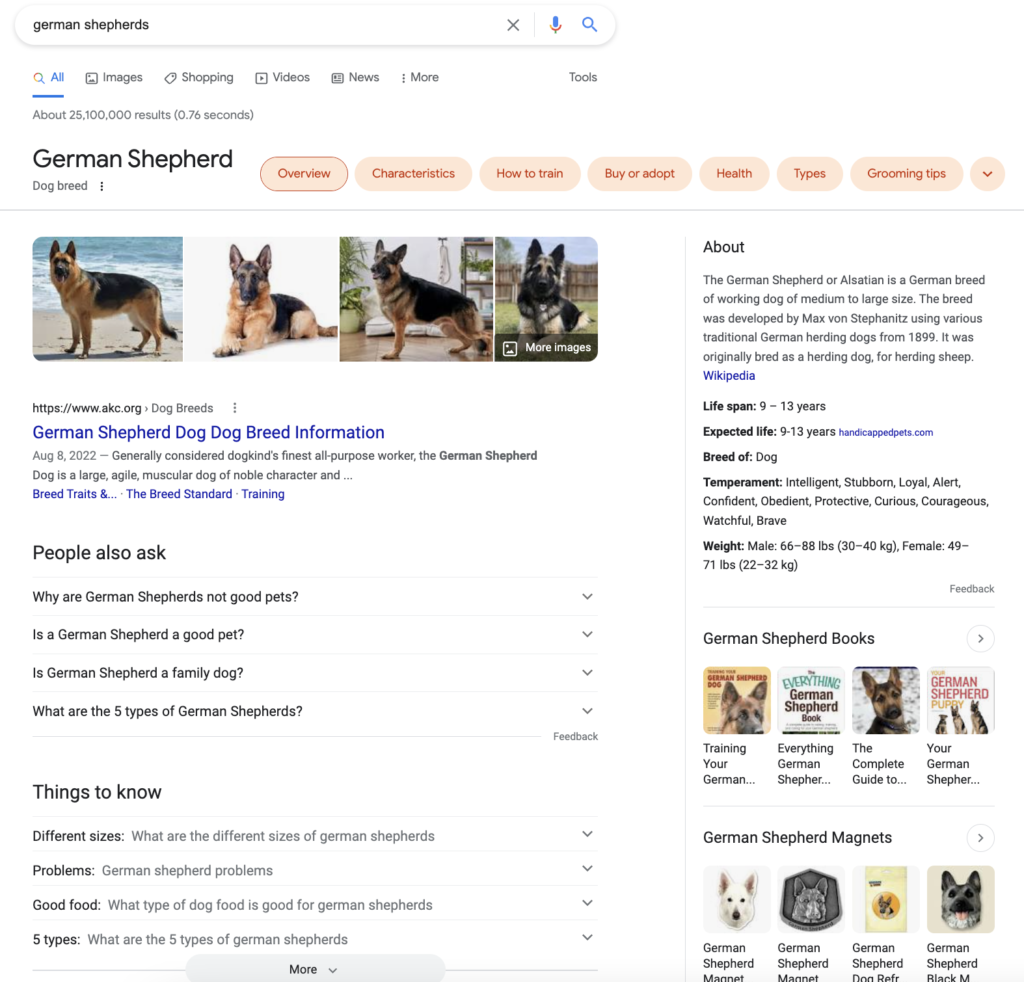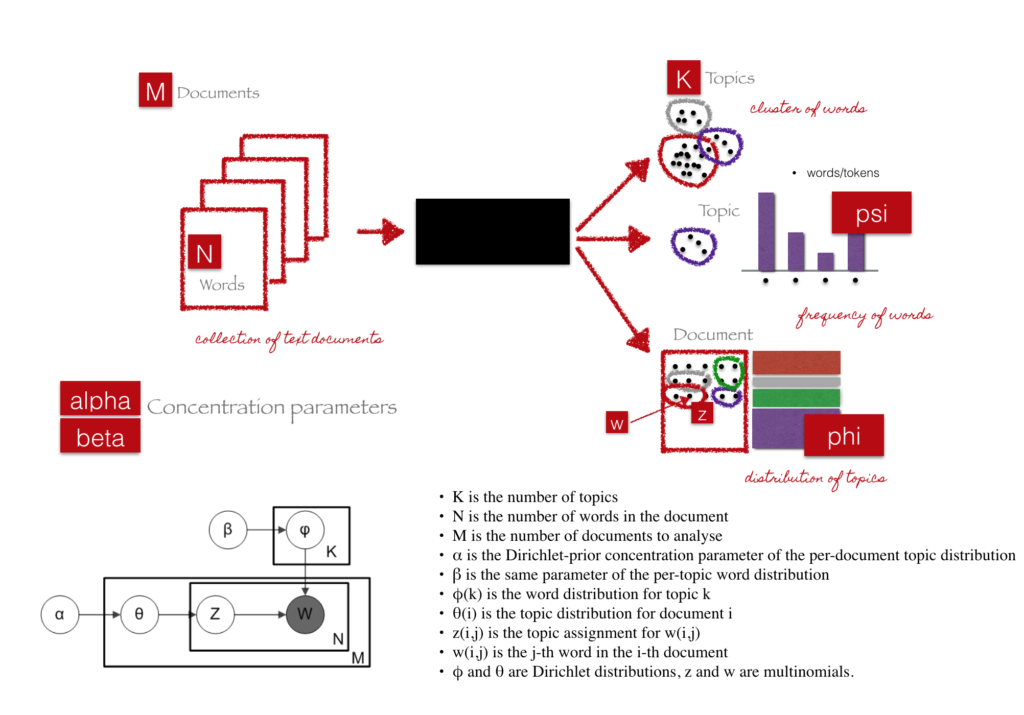The online world is busy, and we’re all looking for an edge to outrank our competitors. As you search for ways to help your business stand out, you might have run across a strategy called topic modeling.
And maybe, like me, you got sucked into an internet blackhole of content about machine learning, programming, Python, and TF-IDF.
Topic modeling is used heavily in scientific circles, but there are applications in SEO and content marketing.
Here is what you need to know about topic modeling, including what it is, how to use it to drive your SEO or content strategy, and how to perform topic modeling using Python or no-code tools.
What is topic modeling?
Topic modeling is an analysis that establishes content’s relevance across a selection of semantically related keywords.
Essentially, topic modeling answers the question, “What topics are frequently mentioned in relation to this main topic?”
It can be used to analyze search results, customer reviews, social media posts, or any other digital conversations.
Do you remember those word clouds popular on social media a few years ago? That is a form of topic modeling.
The topic modeling of today, however, uses machine learning to analyze massive amounts of data and deliver deeper insights into what related topics are most popular for any given topic.
Why does topic modeling matter for digital marketing?
Search engines like Google determine relevance by analyzing the content and looking for related keywords and keywords they would expect to find in other similar documents.
If your content does not meet the statistical expectations for a given topic, your content won’t be considered relevant.
Sounds super exciting, I know.
In more basic terms, topic modeling analyzes content to determine if it’s relevant based not just on the inclusion of a main keyword, but also related keywords and topics.
This matters because Google uses Topic Layering to rank content, which they describe as:
“We’ve taken our existing Knowledge Graph—which understands connections between people, places, things and facts about them—and added a new layer, called the Topic Layer, engineered to deeply understand a topic space and how interests can develop over time as familiarity and expertise grow.”
Let’s say you want to write the best piece of content about German Shepherds. Using topic modeling, you analyze thousands of pieces of content about German Shepherds and track which related topics are mentioned the most.

Based on that data, you might see people also want to learn about taking care of German Shepherds, how much they cost, and how to choose a breeder. Covering those topics is likely to help you rank better.
(Probably. It is Google, after all.)
Topic modeling and machine learning
There are two ways to perform topic modeling analysis—manually or with machine learning.
If you like pain, you can create a spreadsheet, pull the top 100 or so pieces of content on a topic and analyze them to see which sub-topics are mentioned the most.
If you prefer doing things the easy way, I suggest letting machine learning do the heavy lifting.
One of the main modeling techniques is BERT ( Bidirectional Encoder Representations from Transformers.)
This is beyond the scope of what most marketers need to know, however, there is some value in understanding how this works.
If BERT sounds familiar, it’s because it was created by Google. There may be value in using a tech Google created to analyze your data (because it’s probably what Google uses, too.) However, BERT wasn’t originally designed for topic modeling and can be more complicated to use.
Want to learn the Xs and Os of Machine Learning? Check out our comprehensive guide.

How to perform a topic modeling analysis
So, how do you make this magic work?
There are two main ways to do topic modeling—using Python is the most common. If you’re not into coding, I’ll cover a few no-code tools as well.
Python for topic modeling
The most popular application of topic modeling uses Python to gather, clean, analyze, and display the data.
If you’re comfortable with Python (or have someone on your team who is), I’ll give you a quick rundown.
This post on GitHub walks you through the entire process, which includes:
- Inputting data from different sources.
- Cleaning the data to focus on topics and remove punctuation and capitalization differences.
- Perform an analysis to understand the most common words used.
Finally, you can analyze the data to see which topics are related, what type of keywords are mentioned in relation to each other, and spot gaps in your current content.
No-code topic modeling tools?
What about those of us without a computer science degree? Are we stuck creating mediocre content as the world of AI takes over?
Luckily, no. There are several methods to leverage the power of topic modeling without learning a whole new language.
First, you can hire an agency to do the work for you. If the idea of mucking in code makes you want to curl up in a ball and cry, this is likely your best bet. (No judgment.)
Alternatively, you can download this TopicModeling tool from Google Archive. (This video walks you through how to use the tool.)
For a slightly less scientific approach, you can use a word cloud generator to get a general idea of related topics, though they don’t allow you to upload as much data or analyze as deeply.
How can topic modeling improve your SEO strategy?
Topic modeling improves SEO by increasing the relevance of your content.
When your content isn’t considered relevant, it’s unlikely that search engines will consider it the best answer for your targeted keywords.
No matter how hard you work to build backlinks or improve page speed, without relevance, you’re unlikely to rank for your keywords. As a result, you’ll lose traffic across an entire topic.
No good.
Here are a few specific applications of topic modeling for SEO:
- Entity SEO: Topic modeling can improve entity SEO by helping you cover a topic more fully. For example, you might add headings or include landing pages for topics related to your core term.
- Optimize for semantic search: Topic modeling can highlight related terms that make it easier for users to find the sites they’re actually looking for.
- Improve product descriptions: Ecommerce businesses can use topic modeling to see which features users care about and use those features as headings or even landing pages.
- Uncover new longtail keywords: Keyword tools lists might provide ‘related’ keywords, but topic modeling provides data-backed topics you can add to your SEO strategy.
Proper topic modeling also helps establish your business as an authority on a specific topic, increasing visibility, and organic search traffic. Ranking well for terms high in the funnel also improves your ranking for more lucrative keywords further in the buyer’s journey.
How can you use topic modeling to inform your content strategy?
One of my favorite applications of topic modeling is using it to inform your content strategy.
Remember, you can use topic modeling to analyze any type of content or conversation. For example, you could analyze every tweet for the past 12 months on B2B marketing and use that data to write a complete guide to B2B marketing.
You can analyze your own content, competitor’s content, and even customer reviews.
So how can you use the data?
- Find content gaps: Analyze your current content and compare it to the search results to find content gaps—and fill them.
- Update old content: Got older content that just isn’t ranking anymore? Use topic modeling on the top search results to find related topics you can add.
- Create topic clusters: Topic clusters are a great way to organize content and drive organic traffic by publishing several related pieces of content and interlinking them. Topic modeling can highlight subtopics for topic clusters.
Topic modeling helps people find the most relevant content
Topic modeling is, essentially, throwing all the content on a topic into a bag and then seeing which related topics are used the most. For users, this means they are more likely to find the most relevant search results faster.
For marketers, it’s an opportunity to gain deeper insights into what users want to know so you can deliver the exact information they want.









